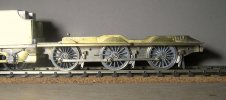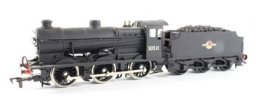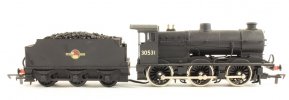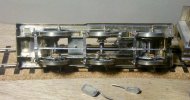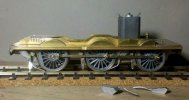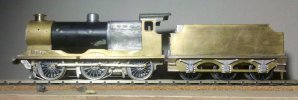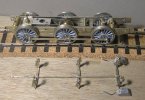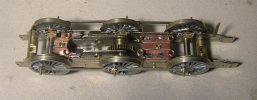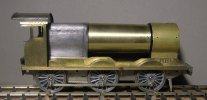Stevers
Western Thunderer
This saga started when I spotted an Ebay listing for this kit. The kit seemed to hold immense potential, but I missed out on it by not bidding. A few weeks later it was relisted as a 'Buy it Now', and I quickly made sure it was mine. My model of Verwood doesn't need a Q Class for weekday services, but they were used on Saturdays in High Summer to haul Welsh miners and their families to the seaside at Bournemouth in exotic looking specials formed of long rakes of Midland and Western Region coaches.
There is a thread on RMWeb that speculated on the possibilities of making a Q out of a 4F and I started to document my build about half way down page 2.
Conversion kit for Airfix 4F to Maunsell Q
Eventually I become conscious that what had become a full-on finescale EM Gauge loco build was looking increasingly out of place in the 'Modellers Questions' part of RMWeb! So I propose to continue my build here.

This is the current state of play with the Crownline body mounted on an adapted SEF 4F chassis ready to receive hornblocks, equalising beams and wheels. The tender has been built and is mounted on a twin beam compensated Comet chassis. In my conversion the only part of the Airfix 4F retained is the boiler, smokebox, backhead and cab floor.
There is a thread on RMWeb that speculated on the possibilities of making a Q out of a 4F and I started to document my build about half way down page 2.
Conversion kit for Airfix 4F to Maunsell Q
Eventually I become conscious that what had become a full-on finescale EM Gauge loco build was looking increasingly out of place in the 'Modellers Questions' part of RMWeb! So I propose to continue my build here.

This is the current state of play with the Crownline body mounted on an adapted SEF 4F chassis ready to receive hornblocks, equalising beams and wheels. The tender has been built and is mounted on a twin beam compensated Comet chassis. In my conversion the only part of the Airfix 4F retained is the boiler, smokebox, backhead and cab floor.





